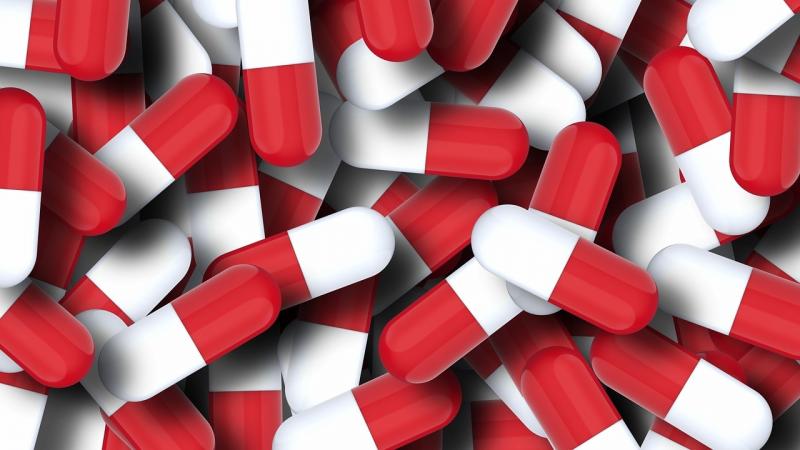
If you ever happen to visit a hospital, hope that you do not bring home the bacterium Methicillin-Resistant Staphylococcus aureus (MRSA). This notorious bacterium can survive most of the antibiotics flung at it—penicillin, cephalosporin or methicillin and hence is difficult to treat. In a recent study, researchers from the Institute of Advanced Study in Science and Technology, Guwahati, Assam, have used a combination of cutting-edge nanotechnology, antibiotics and enzymes, to punch holes in the defences of this bacterium and kill it.
Found in crowded places like hospitals, prisons and nursing homes, MRSA is a more dangerous pathogenic strain of the otherwise 'friendly' Staphylococcus aureus, which mostly lives harmoniously with other microbes in our upper respiratory tract and skin. Sometimes, this friendly bacterium acquires specific antibiotic resistant genes from other bacteria and turn into its adamant, nasty MRSA avatar. The first symptom of infection from MRSA is an innocent-looking pimple or a boil on the skin, which soon escalates into its dreadful form that is resilient to many antibiotics.
The researchers of the current study, published in the journal Scientific Reports, prepared a ‘concoction’ of gold nanoclusters, the antibiotic ampicillin and a lysozyme enzyme. When this combination was used on animal model infected by MRSA, it not only reduced the systemic infection in mice and cleared infection from diabetic wounds of rat but also solved the age-old problem of antibiotic resistance in this bacteria.
“The unique ultra-small size, stability and multiple modes of action of the nanohybrid combination are what makes it so successful,” says Dr Sanjeeb Kalita and Dr. Raghuram Kandimalla, the lead authors of the study. The research was supported by the Department of Science and Technology.
Ampicillin is an antibiotic which binds to and inhibits an enzyme required to build bacterial cell walls during cell division. However, when this drug is administered directly, the dosage that could enter inside a bacterium might not be sufficient to kill it, giving it a chance to develop resistance. In this study, the researchers coated ampicillin on gold nanoclusters. Nanoclusters are microscopic particles smaller than nanoparticles and can easily penetrate the cell wall of the bacteria. Since nanoclusters have a higher surface area, they can be loaded with higher concentrations of ampicillin, providing more sites of interaction with the bacteria at a time. This ability increases the efficacy of the drug against the bacteria.
Most antibiotic-resistant bacteria pump out the antibiotics from the interior of the cell using specific proteins in the cell membrane. The gold nanoclusters, used in the study, block this action, thereby choking the bacteria with a high dose of antibiotics that is present inside. In certain bacteria that have a thicker cell wall (gram-positive bacteria), the antibiotics cannot penetrate easily. Hence, the researchers have combined the nanoclusters with an enzyme called lysozyme, which degrades the bacterial cell wall by punching holes into it and making it susceptible. Besides, gold ions released from the nanoclusters may inhibit specific enzymes in the bacteria.
The researchers also point out that using nanoclusters, instead of nanoparticles, is less toxic to our cells. Nanoparticles are taken into our cells through a process called ‘cell eating’ or phagocytosis. However, since nanoclusters are smaller in size, they enter the cells through pinocytosis or ‘cell drinking’, which allows only small doses inside at a time making it less toxic says Dr. Sarathi Kundu and Ashim Chandra Bhowal.
When researchers used the ampicillin and lysosome coated gold nanoclusters on MRSA, they found that these bacteria, which were proven to be resistant to antibiotics previously, were killed altogether. They further observed that even after repeated exposure (15 times) to these nanoclusters, the bacteria could not develop resistance—a finding that could solve the most critical problem of antibiotic resistance. Also, just topical application of these nanoclusters on a diabetic wound eradicated MRSA infection, leading to quicker wound healing. On testing the nanoclusters in MRSA infected rat, the researchers observed that it cleared the infection and increased the lifespan of the rat.
“The reported nanohybrid system overcomes the resistance behaviour of MRSA through exploiting the physical barriers, which are not bacteria-specific. Through its versatility, it can be potentially effective against most of the other resistant bacterial types too,” remarks Dr Kalita and Dr. Kandimalla, adding that this approach can be replicated on other drug resistant bacteria.
At a time when pharma companies are hesitating to uncover and develop new antibiotics, the way forward could be to use old antibiotics combined with new sophisticated technology to counter antibacterial resistance. “An estimated 700 000 people die annually from infection with drug-resistant microbes. On the other hand, due to uncertainty in the path to market and profitability, a majority of the pharmaceutical companies are abandoning antibiotic development programs. The yield of the gold nanocluster is significantly high, and we believe that the cost-benefit ratio is maintained by taking account of this drug resistance crisis”, Dr Kalita and Dr. Kandimalla signs off.
